How to craft a compelling 360 story?
To truly captivate audiences, crafting a compelling narrative within a 360 Advertising Video is paramount. It moves beyond simply showcasing offerings in an immersive space, aiming instead to position the viewer as the central figure. Brands should embed their message within relatable scenarios, demonstrating value through real-world contexts and illustrating seamless integration into daily life or specific workflows. Thinking strategically about the viewer's journey inside the spherical view is key to building an engaging experience.
Guiding attention within this expansive format becomes a critical skill. Subtle visual cues can direct the gaze towards important elements or messages, ensuring nothing vital is missed in the immersive environment. Calls to action require precision; they must be specific and action-oriented calls to action, prompting clear next steps like "Request a Demo." Incorporating social proof, perhaps brief glimpses of well-known client logos, quickly builds essential credibility and trust.
Measuring effectiveness in this dynamic space involves looking beyond simple view counts. Tracking metrics such as qualified leads generated or observing the positive impact on the sales cycle length provides a clearer picture of the return on investment. Analyzing viewer behavior through tools providing heatmaps offers granular insights into engagement patterns, showing exactly which areas capture the most attention. This data is invaluable for refining content and optimizing element placement for your 360 ad video.
- Plan the narrative around the viewer's perspective and their viewer's journey.
- Use action-oriented calls to action tailored to the objective.
- Incorporate social proof to enhance trust.
- Analyze viewer attention data to refine content placement.
Designing effective visual elements in 360 advertising
Creating visual elements that resonate in 360 advertising involves guiding viewers towards desired actions effectively. Clear, specific calls action prove vital as the immersive experience concludes. Instead generic prompts, effective visuals feature action oriented text, such "Start Your Free Trial" "Request Demo" relevant campaign objective viewers journey. Strategic placement ensures they easily discover next steps within the environment, leading higher engagement.
Measuring investment return means tracking production costs against tangible value gained. Assess gains like increased qualified leads shortened sales cycles better informed prospects. Also gauge reduced support requests arising from viewers understanding features visually presented. Making visuals relatable proves crucial connection. Demonstrating products real world scenarios, showing features integrated into workflows solves industry problems significantly increases perceived value.
Analyzing how viewers interact offers critical insights optimizing visuals. Tools like heatmaps attention tracking show exactly viewers focus rewatch skip content. This data helps identify confusing segments areas interest drops, allowing necessary visual refinement. Incorporating social proof visually builds trust quickly. Briefly show logos well known companies using product mention satisfied user statistics where relevant. Viewer interaction provides blueprint for refinement.
- Use action oriented text for calls action like "Download Report" rather generic "Learn More."
- Demonstrate features within real world contexts illustrating seamless integration.
- Analyze viewer heatmaps identify areas needing visual adjustment improving engagement.
- Conduct A/B testing different visual elements like thumbnails CTA designs determine peak performance.
Optimizing visuals different platforms essential reaching viewers effectively. Consider social media feeds need instant attention potentially understandable without sound using text overlays shorter. Conversely, video embedded product page assumes higher viewer intent thus slightly longer detailed, perhaps showcasing a vehicle's capabilities in a 360 automotive video or explaining software benefits through a 360 marketing video.
By carefully crafting these visual elements focusing viewer experience and analyzing performance, creators significantly enhance effectiveness their 360 advertising efforts driving desired outcomes.
Setting clear goals for your 360 advertising video
Setting clear goals for any immersive campaign transforms efforts from creating engaging content into driving measurable business outcomes. Teams must first define precisely what success looks like before production begins, ensuring every creative decision supports achieving specific objectives. Aligning video strategy with broader marketing funnel stages helps determine the desired viewer action after experiencing the 360 world.
Quantifying return on investment involves tracking production costs against the value generated. This value might manifest as an increase in qualified leads identified, a reduction in the sales cycle length due to prospects arriving better informed, or even decreased support inquiries from users understanding a product more fully. Teams aiming to highlight product utility find crafting a 360 showcase video within realistic settings a powerful approach, demonstrating features in relatable contexts and showing how solutions integrate into existing workflows.
Analyzing insights derived from viewer interaction tracking becomes paramount for refining content effectiveness tied to these goals. Understanding where viewers spend time, points causing drop-off, or sections they rewatch provides invaluable data for optimization. For objectives centered on emotional engagement or narrative, consider how a 360 cinematic video can immerse viewers in a brand's story, using tracking data here to gauge moments of highest emotional resonance or narrative clarity. Strategic use of social proof elements can further build trust and encourage desired actions.
- Define calls to action using action-oriented text like "Request a Demo" or "Download the Report," guiding viewers explicitly.
- Conduct A/B testing on crucial elements including initial visuals, messaging points, or even the placement and wording of calls to action.
- Optimize content and desired viewer interactions based on platform viewing environments and user intent.
- Ensure the video remains understandable and impactful even in scenarios where audio is not readily available, particularly on mobile feeds.
Ultimately, clarity in purpose empowers creators to build experiences that not only captivate but convert viewers into valuable leads or customers.
Maximizing the viewer experience in spherical video
Maximizing the viewer experience in spherical video means moving beyond initial immersion to ensure engagement translates into meaningful action and measurable results. Creators must guide viewers effectively and understand how their content performs across diverse viewing environments.
Clear action calls prove vital. Instead of generic prompts, use action-oriented text like "Start Your Free Trial" or "Request a Demo," precisely tailored to video objectives and where viewers are in their journey. Measuring return on investment tracks production costs against generated value, such as increased qualified leads, reduced sales cycle length from better informed prospects, or fewer support tickets. Analyzing viewer behavior using heatmaps and attention tracking reveals exactly which parts resonate or cause drop-offs, providing data invaluable for identifying confusing segments. Incorporating social proof like glimpses of well-known company logos or mentioning satisfied user statistics builds credibility and trust swiftly.
- Using real world scenarios demonstrates features within relevant contexts, making product tours relatable and believable.
- Showing how products integrate into existing workflows increases perceived value.
- A/B testing different elements such as thumbnails, introductory seconds, call to action placement, or script variations offers insights into audience resonance.
- Optimizing for platforms means considering viewer intent and environment; social media requires brevity and sound-off understanding, while product pages allow for detail.
Analyzing data helps refine content. Each 360 Advertising Video example presents unique learning opportunities. Understanding viewer interaction refines future projects. Optimizing a 360 ad video example across different viewing contexts ensures wider reach and impact.
Measuring success and continuously refining content based on viewer interaction ensures spherical videos deliver tangible value.
Where to share your 360 advertising content
Crafting compelling 360 advertising content represents a significant investment; however, where and how this content is shared dictates its ultimate success. Moving beyond mere visibility requires a thoughtful approach tailored to various digital environments. Effective distribution means selecting platforms where target audiences actively engage and optimizing the experience for each context. This strategic focus ensures valuable creative work achieves its full potential, driving desired business outcomes.
Assessing video impact extends beyond simple view counts. Organizations must connect video performance to tangible business metrics. Calculating the true return on investment involves offsetting production expenses against quantifiable value generated. This value manifests as an increase in qualified leads captured or a reduction in the length of the sales cycle, as prospects arrive better informed. A decrease in support inquiries can also signal the video effectively answered user questions about features.
Content resonates most strongly when it places products within authentic, real-world contexts. Showing how a solution integrates into existing workflows or directly addresses daily challenges significantly elevates its perceived value. Analyzing viewer interactions provides invaluable insights. Tools offering heatmaps or attention tracking reveal which segments captivate viewers and where interest wanes. For instance, examining data from a 360 marketing video example can pinpoint exactly when complex explanations lose audience attention, guiding future content refinement. Incorporating social proof, such as displaying logos of well-known clients or citing user statistics, quickly builds credibility and trust.
Continuous optimization is key to maximizing impact. Systematically A/B testing different video elements provides clear data on audience preferences. Experimenting with the initial seconds or thumbnail images can drastically improve click-through rates and initial engagement. Tailoring the call to action wording and placement based on test results directly influences conversion rates. Platforms require distinct strategies; content for social feeds needs instant hooks and often functions without sound, necessitating clear text overlays. Videos hosted on owned properties, like product pages, can offer greater detail assuming higher viewer intent. Sharing a captivating 360 automotive video example might require different editing and messaging for Instagram compared to a manufacturer's website.
Here are key strategies for effective distribution and optimization:
- Develop action-oriented calls to action like "Start Your Free Trial," not generic prompts.
- Utilize heatmaps and attention tracking to refine content based on viewer drop-off points.
- Implement A/B tests on thumbnails, opening segments, and call to action variations.
- Adapt video length, style, and text overlays for platform specifics like social media sound-off viewing.
By focusing strategically on where and how 360 advertising content is shared, organizations can transform creative assets into powerful tools for achieving measurable business results.
How to make your brand stand out in 360 video
To truly capture attention in the expansive view, brands must deploy actionable strategies elevating their content beyond simple immersion. Merely presenting a scene isn't enough; guiding the viewer's journey and clearly defining next steps proves crucial. Creators should meticulously plan how to move viewers from passive watching to active engagement, ensuring every element serves a purpose in conveying the brand message effectively within the spherical space.
Guiding viewers requires precision. Instead of vague invitations to explore, offer specific actions relevant to their potential interest. This involves crafting calls to action that prompt direct responses, whether it's learning more about a demonstrated feature or exploring a related product. Simultaneously, measuring the impact means tracking how these specific actions correlate with desired business outcomes, quantifying the video's return against its investment in tangible results like lead generation or reduced support queries.
Engaging viewers means showing relevance. Presenting products or services within real-world settings allows audiences to envision themselves using them, integrating seamlessly into their own contexts or daily tasks. Understanding viewer interaction through analytics provides invaluable insight, revealing where attention is focused and identifying points where interest might wane. Incorporating social proof, perhaps showcasing recognizable users or sharing compelling statistics, quickly builds trust and credibility, making the brand message more persuasive. Consider how a 360 showcase video example might place viewers directly inside a complex manufacturing plant, highlighting equipment features in operation. For those crafting a 360 cinematic video example, testing different opening scenes through A/B methods can significantly impact initial viewer retention.
- Implement A/B testing on various components – from the initial thumbnail capturing attention to the exact wording within a call to action.
- Tailor the content strategy for different platforms, recognizing that viewers on social feeds might require quicker hooks than those seeking detail on a product page.
- Ensure calls to action are not only specific but also visually prominent and easily selectable within the 360 environment.
- Use viewer data derived from heatmaps and attention tracking to continuously refine content, optimizing for maximum engagement and clarity.
Encouraging viewer actions within the 360 space
Transitioning viewers from passive observers to active participants within immersive environments unlocks the true potential of 360 content. They offer a unique canvas where interaction can be seamlessly woven into the narrative, guiding individuals towards desired outcomes with greater intention. Creators focus on designing experiences that feel intuitive, leveraging the spatial nature of the medium to place prompts and information where viewers are naturally looking or navigating, turning exploration into engagement.
Achieving measurable results from these immersive campaigns requires clear and specific calls to action. Moving beyond generic instructions allows creators to direct viewers precisely towards the next step in their journey, whether it is requesting a demonstration, downloading a resource, or initiating a trial. Measuring the success of these efforts involves tracking campaign costs against tangible value generated, such as an increase in qualified prospects or a reduction in support inquiries because the video effectively educated users. Reviewing a compelling 360 Advertising Video sample offers creators insights into effective calls to action and narrative flow.
Making the content itself resonate is crucial. Demonstrating product features within real-world scenarios makes solutions relatable and believable, showing how they integrate into existing workflows or solve specific industry problems. Incorporating social proof, like displaying recognizable logos of satisfied clients, quickly builds credibility. Applying A/B testing principles to refine a 360 ad video sample helps uncover viewer preferences and boost conversion rates, ensuring every element contributes effectively to the persuasive goal.
- Analyzing viewer behavior through heatmaps and attention tracking tools provides granular data, revealing exactly which parts of the immersive experience capture and hold interest.
- This detailed analysis is invaluable for identifying confusing segments or points where viewer engagement tends to drop off, guiding content refinement.
- A/B testing various components, from the opening seconds to the CTA's wording or placement, yields actionable insights into what resonates most with the target audience.
- Optimizing for different platforms recognizes that viewer intent and environment vary; social feeds demand instant attention and sound-off comprehension, while website embeds allow for deeper dives.
By meticulously planning calls to action, leveraging analytics to understand viewer interaction, refining content based on real-world relevance and social proof, and tailoring delivery for diverse platforms, creators transform immersive videos into powerful engines for conversion.
Understanding the viewer's viewpoint in panoramic video
Understanding how viewers navigate panoramic video is essential for crafting impactful experiences. Unlike traditional linear formats, these videos grant control, allowing eyes to wander and explore the entire scene. Guiding this exploration subtly, ensuring key messages are discovered, becomes paramount. Strategic calls to action serve as vital signposts at the journey's end, prompting desired viewer activity.
These calls must be more than generic prompts; they require clarity and an action orientation. Specific phrases resonate stronger, directly indicating the next step. Measuring success involves looking beyond simple views, tying production investment to tangible business outcomes. This includes tracking how these immersive experiences influence leads, potentially shorten sales cycles by better informing prospects, or even decrease the volume of support inquiries as users gain deeper understanding.
Creating a connection means presenting products or services within contexts viewers recognize. Showing how something integrates into existing workflows or solves everyday problems in a relatable setting increases its perceived value. Analyzing viewer behavior provides crucial insights, revealing where attention is focused or lost. Tools generating heatmaps visually represent areas of interest, highlighting segments that capture imagination versus those causing disengagement. This granular data is invaluable for refinement. Building trust quickly can involve incorporating social proof, such as brief glimpses of familiar brand logos or statistics showcasing satisfied user numbers. Continual refinement through A/B testing different video elements allows creators to identify what truly resonates with their target audience and drives desired conversions. Optimizing for diverse viewing platforms ensures the experience remains compelling, whether it is a detailed 360 automotive video sample on a dedicated site or a dynamic 360 marketing video sample shared on social feeds with different viewer expectations.
- Employ action-oriented calls, for instance, "Request a demonstration" or "Begin your free trial."
- Evaluate return on investment by measuring increases in qualified leads or reductions in support requests.
- Utilize heatmaps and attention tracking to understand precisely which video segments viewers engage with most.
- Test variations of video elements like introductory scenes, calls to action, or narrative approaches to optimize impact.
Adapting content based on these insights allows for a more engaging and effective viewer experience.
Measuring the true impact of 360 advertising
Measuring impact in 360 advertising involves looking deeper than simple view counts. Building on understanding audience interaction, marketers now focus on the subtle engagement signals within immersive experiences. This means analyzing precisely how audiences navigate, where attention settles, and what captivates them within the environment.
True return on investment quantifies video costs against tangible business value. This includes generating higher quality leads, potentially shortening the sales cycle as prospects gain better understanding, or even decreasing support inquiries because users grasped product features more clearly. Measuring these concrete outcomes demonstrates genuine value.
Analyzing viewer behavior analysis deeply provides critical optimization insights. Tools like heatmaps and attention tracking reveal exact focus areas and navigation paths. This granular data pinpoints confusing segments or moments where interest wanes, guiding content refinement. Observing a successful 360 showcase video sample often demonstrates how such analysis informs engaging design.
- Implement clear, actionable calls tailored to the viewer journey stage; generic prompts lack impact compared to specific directives like "Request a Demo".
- Demonstrate products solving problems in real-world contexts and build credibility by incorporating social proof like client logos or user statistics.
- Leverage heatmaps and attention tracking tools to uncover precise viewer focus areas and identify points of confusion or disengagement, providing actionable data for edits.
- A/B test specific elements—from opening hooks and CTA wording to script nuances—and optimize content presentation for distinct platform contexts; social feeds demand immediate attention and sound-off capability, while product pages allow greater detail, even for a 360 cinematic video sample.
Ultimately, applying robust, data-driven analysis allows continuous strategy refinement, maximizing the effectiveness of 360 advertising efforts. This analytical rigor transforms creative vision into measurable results.
Exploring different 360 advertising video formats
Moving beyond the initial creation of a 360 video, the focus shifts to optimizing its impact for measurable results. This involves strategically leveraging the format's potential through thoughtful execution. Demonstrating product value using real-world scenarios shows potential users how it integrates into existing workflows, significantly increasing its perceived value and making it more relatable. Incorporating social proof, like brief flashes of well-known company logos or mentioning statistics about satisfied users, builds credibility and trust quickly among viewers. Analyzing viewer behavior using heatmaps and attention tracking tools is crucial for understanding how audiences interact with the video.
These tools identify exactly which parts viewers watch, rewatch, or skip, providing granular data invaluable for identifying confusing or low-interest segments. Refining content based on this analysis effectively maximizes viewer retention and engagement. Developing a compelling 360 Advertising Video idea often stems from understanding audience interaction patterns revealed through careful analysis, ensuring the concept itself aligns with how people consume this type of media.
Measuring the return on investment involves tracking production costs against the value generated. Quantifiable outcomes can include increased qualified leads, a reduced sales cycle length due to better-informed prospects, or a decrease in support ticket volume from users who understood features from the video. Quantifying success in this way justifies investment and informs future strategy for optimizing resource allocation. A/B testing different video elements also yields significant insights for optimizing performance.
- Specific, action-oriented calls to action prove absolutely vital at the video's conclusion. Move beyond generic prompts like "Learn More." Utilize action text such as "Start Your Free Trial," "Request a Demo," or "Download the Report." Align the CTA with the video's objective and the viewer's journey stage for maximum relevance and effectiveness.
- Test elements like the thumbnail image, the initial 10 seconds of content, the placement or wording of the CTA, or even slight script variations. This reveals what resonates most with the target audience and drives higher conversions, improving overall campaign ROI.
- Optimizing content for different platforms is crucial for successful deployment, considering viewer intent and viewing environment. Videos for social media feeds need to grab attention instantly, potentially be understandable without sound using text overlays, and remain shorter in length.
- A video embedded on a product page, conversely, assumes higher viewer intent and can thus be slightly longer and more detailed, providing comprehensive information. Tailoring each 360 ad video idea involves considering platform constraints and audience expectations, ensuring optimal delivery and engagement across diverse channels. Platform optimization maximizes reach and impact, ensuring the message resonates with the intended audience.
Strategic execution beyond initial creation is necessary for sustained campaign success and achieving measurable business results.









